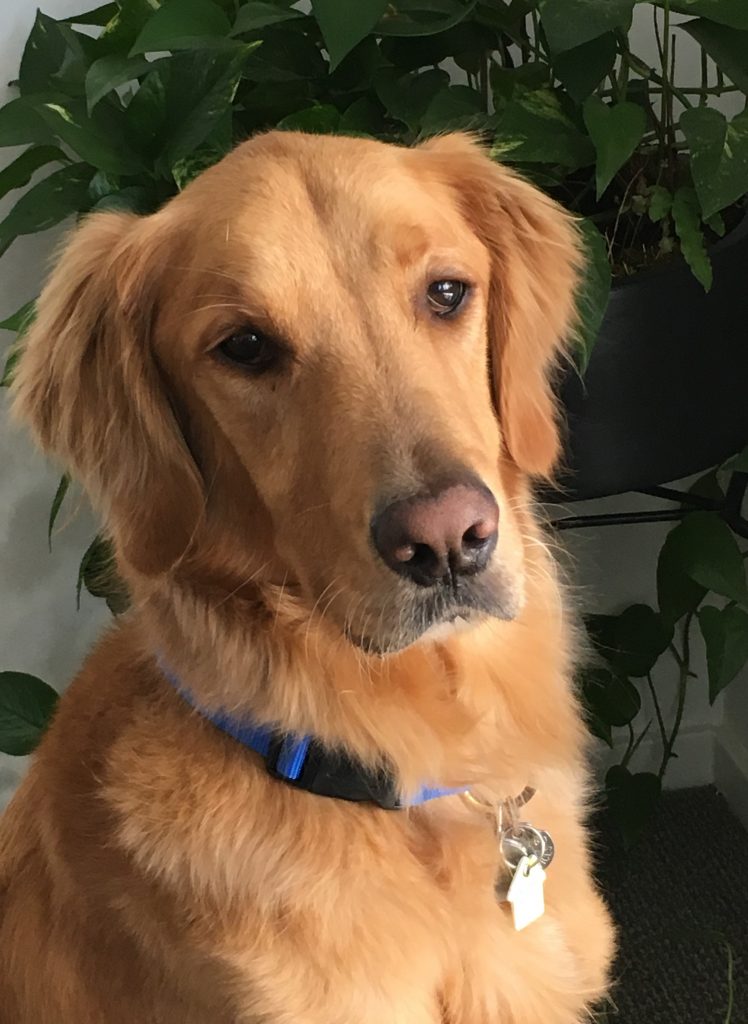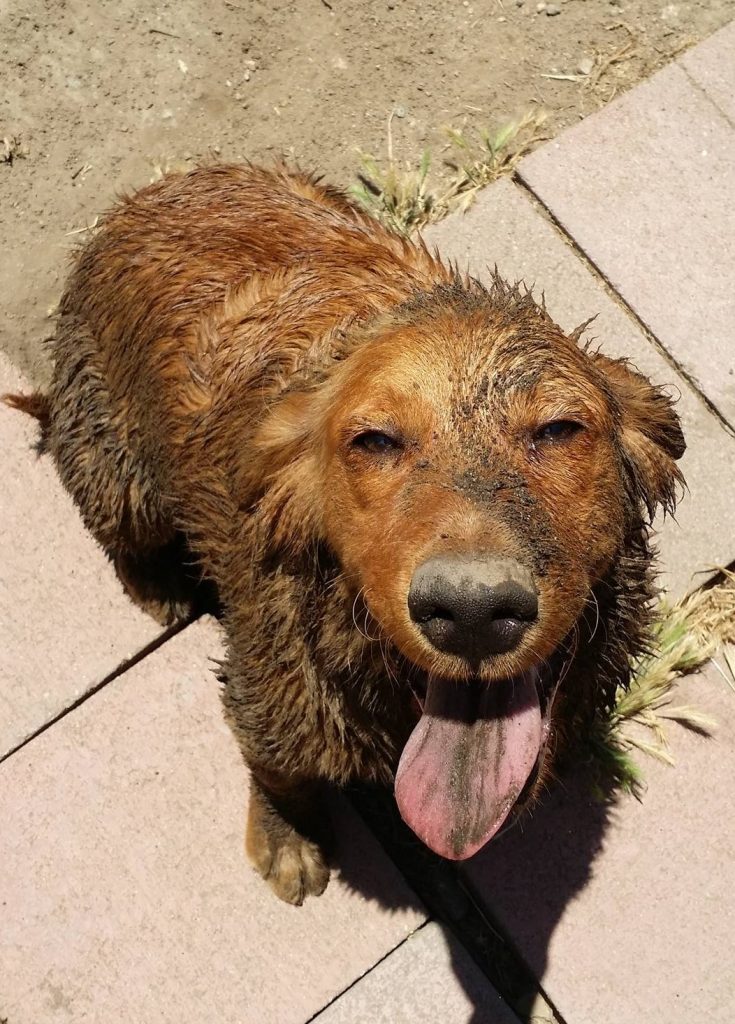The Washington Post published an article in 2012 which will resonate with any person who has lost a special pet.
Copy and Paste this link in your browser OR read below: https://wpo.st/Itp-2
It’s been four months, and yet if somebody asks me about that day, my voice will crack. By “that day,” I mean the day I came home from work to find my Doberman, Red, splayed out on my bedroom floor, his head to one side, his body lifeless but still warm. It’s an image I can’t seem to shake, as much as I try.
I’m no stranger to death. I was a mess of anger and confusion when my father, suffering the aftermath of a stroke, took his last gasps one day in 1995, his children gathered around his hospital bed. And three years later, the death of my sweet, beloved sister Bonny after a withering battle with brain cancer was nothing short of heartbreaking. Yet somehow, and much to my distress, the death of my dog seems even harder. I haven’t felt grief quite like this since, well, the death of my previous dog five years ago.
How could the death of a canine possibly hurt as much as that of a family member? As the sadness lingers, part of my grieving process has been to try to understand the differences.
Researchers have long known that the animal-human bond is strong: A 1988 study in the Journal of Mental Health Counseling asked a group of dog owners to place symbols for their family members and pets in a circle representing each dog owner’s life. (The distance between the subject and the other symbols corresponds to the relative, real-life closeness of those relationships.) The subjects tended to put the dog closer than the average family member, and about as close as the closest family member; in 38 percent of the cases, the dog was closest of all.
Research comparing grief over the death of pets to that over the death of friends and family members has come up with different answers. A 2002 article in the journal Society & Animals that reviewed multiple studies found that the death of a companion animal can be “just as devastating as the loss of a human significant other,” not quite as severe, “far more intense” or, well, just about the same.
Sandra Barker, the director of the Center for Human-Animal Interaction at Virginia Commonwealth University, who co-authored the 1988 diagram study, counsels grieving pet owners and teaches veterinary students the importance of understanding the process. Studies aside, her own experience has taught her that the intensity and longevity of the grief vary widely. Like me, her clients sometimes begin the process with a sense of surprise and even shame that they’re grieving more for their pet than for a sibling or parent.
“But when they realize that the difference is the pet gave them constant companionship, and there was total dependency, then they start to realize that’s why they’re grieving so intensely,” she said.
Rearranging my life
It’s true that I spent so much time taking care of Red, and Gromit before him, that when each one died it didn’t merely leave a hole in my single-person household; it was as if someone had rearranged my life, excising without my permission many of the rituals that had governed it.
Over the course of 13 years, for instance, the same thing would happen with Gromit every morning. I would sit on my bed to put on my shoes, and he would drape himself across my lap. I would scratch his butt and he would reward me with a big sloppy kiss. Recently, I did the math: Accounting for the times I was traveling without him, this interaction happened more than 4,000 times.
So it makes sense that when he died, it was months before I could touch my shoelaces without expecting to also touch him. And I had no idea what to do with my mornings without my pooch to require that small gesture of me.
About nine months after Gromit died, once I knew I didn’t want to replace him but just wanted to consider getting another dog, I signed up as an occasional foster parent at a no-kill shelter in Dupont Circle. My first assignment, Red, was a living, breathing refutation of the portrayal of Dobermans as vicious guard dogs in such movies as “Hugo” and the animated classic “Up.” The first time he ambled over to me when I was sitting on the couch in my apartment and lay his head across my lap so I could stroke his snout, I knew I’d adopt him.
And for the two months I lived in that apartment after he died, the couch never seemed so empty, nor the place so quiet.
Keeping it simple
My relationships with Red, Gromit and Consuela (the cat who has survived them both) have been, for lack of a better word, simple. Or at least simpler than that with my sister — but especially simpler than that with my father, with whom I had constant conflicts over religion and sexuality, and whose love and support seemed to always have strings attached.
Barker echoes the idea that the unconditional, nonjudgmental love offered up by animals — “they’re just happy you’re there” — can make it especially hard to lose them. Were these losses more difficult because I was living alone? Some studies suggest that just as pets can ease loneliness, especially among single people, it can be harder for us when they’re gone.
And then there is the suddenness factor. Former president Bill Clinton told Newsweek in 2002 that the death of his dog, Buddy, who was hit by a car, was “by far the worst thing” that Clinton had experienced after leaving the White House. Barker says that not having time to prepare for the pet’s death “usually makes it more intense” and that something like an accident can add a layer of traumatic stress, especially if the owner witnesses it.
She might as well have been talking about me. Gromit’s battle with cancer at age 13 was short, but at least I spent the last few weeks of his life preparing for it. I held him when the vet put him down, and it was horrible, but I knew he was as comfortable as possible — and that having me there was part of his comfort.
At age 7, Red had been otherwise healthy when he started wheezing one day last October. The vet thought he had allergies and advised me to return if he didn’t get better within a couple of weeks. Two weeks later, a chest X-ray showed a mild pneumonia, and the vet sent Red and me home with antibiotics that she hoped Red would respond to within a few days. I gave him a dose at about 1 p.m. and went to work; when I returned that evening, he was dead.
‘I’m sorry’
It’s too painful to describe the extent of my immediate reaction, or really the reactions that unfolded over the following days, weeks and even months. But I will say that when Gromit was dying, I kept repeating the words, “Thank you.” In Red’s case, too late for him to hear, I kept repeating, “I’m sorry.”
The fact that our pets are so dependent on us makes it all too easy to second-guess our decisions and descend into a pit of guilt. Shouldn’t I have known? Did I do everything I could? If I had just . . . what? Taken him to the vet sooner? Insisted he be hospitalized? What if I had been home? I might not have been able to save him, but at least in his last moments he would have known I was with him, and maybe that would have made it a little easier for him if not for me.
In “The Year of Magical Thinking,” Joan Didion refers to grief as passive and mourning as active. Sure enough, when I talked to Kathy Reiter, who leads monthly pet-loss support groups in Alexandria and Fairfax County, she eventually (in true therapist style) turned the conversation to my experience, asking what I’d done — actively — to help myself with this process. It occurred to me that I needed to sit around and cry a little less and to grieve, publicly, a little more.
That’s easier said than done. A few weeks after Red died, some friends from the dog park suggested we have a get-together in his memory. I was grateful for the suggestion, but as I came in and exchanged hugs, I felt a bit sheepish when I pulled out the box of Red’s ashes and a recent photo and set them up on the table. Maybe it was my imagination, but I got the feeling that even friends who had gathered for just this purpose would rather say just a quick “I’m sorry; how are you doing?” than truly acknowledge the elephant — or the Doberman — in the room. It wasn’t until a couple of hours and several drinks later that we finally told a few stories about him.
More than just a dog
Thankfully, many of my closest friends, family members and co-workers have been wonderfully sympathetic, and for that I’m grateful. Others have seemed reluctant to talk about my grief, and I suspect that it’s because they’re trying to stay in denial about the prospect of losing their own animal or trying not to remember the death of a previous one. My least-favorite reaction comes from those who are aiming to be supportive but regularly ask me when I’m going to adopt another dog, a reaction that seems tantamount to saying, “Get over it already. He was just a dog. Isn’t one as good as another?”
That can lead to what psychologists refer to as disenfranchised grief.
“Simply stated, many people (including pet owners) feel that grief over the death of a pet is not worthy of as much acknowledgment as the death of a person,” researchers wrote in a 2003 article in the journal Professional Psychology: Research and Practice. “Unfortunately, this tends to inhibit people from grieving fully when a pet dies.”
Two months after Red died, I’ve had a change of scenery, moving to my sister Rebekah’s home in southern Maine to work on book projects for a year. Here, my sister and brother-in-law’s gregarious chocolate Lab, Maya, helps keep me company and reminds me that eventually, probably sometime next year, I’ll be ready to adopt again. Meanwhile, Red’s ashes sit in a beautiful carved wooden box on a shelf in my bedroom, right in front of a beautiful drawing that a colleague’s son made for me after Red died. Those artifacts have helped, but I’ve needed something more.
My sources for this article noticed the answer before I did: I’m a writer, and I need to process my grief by writing, so that’s what I’m doing. Reiter admitted that her own work helping others who have lost animals was partly as a tribute to her cat, Prince, who died at the ripe old age of 23, but also as a way to validate and work through her own grief. By writing about Red, she said, “you are doing what I did: It’s self-serving, but it’s a tribute, and it’s a catharsis for you. You want to capture the memories, so you don’t forget.”
There’s one more task ahead of me. Five years ago I buried Gromit’s ashes in the woods outside Rebekah’s house, along with his collar, a note, a photo of us together and one of his favorite things: a bagel. The headstone says, “Thank you.” Red’s box, meanwhile, went up on the shelf when I got here in January, partly because the ground was frozen solid.
The days are getting longer, though. The ground has thawed. I’ve been looking at headstones and, more important, composing the words that will go on Red’s.
Yonan, the Post’s Food and Travel editor, is on book leave. Follow him on Twitter @joeyonan.











